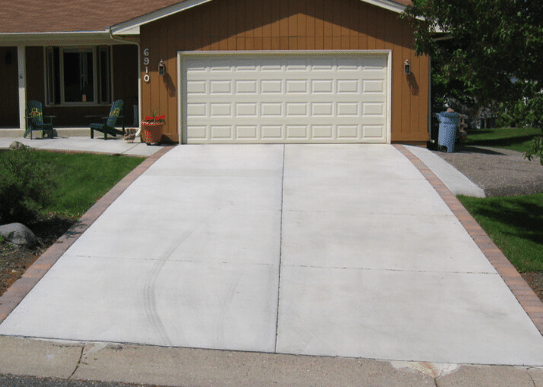How To Assess The Condition Of Your Concrete Driveway In Carlsbad?
 Concrete driveways are an attractive and durable option for homeowners looking to add value to their property. But like any outdoor structure, they require regular maintenance and assessment to ensure they remain in top condition. Here are seven tips to assess the condition of your concrete driveway:
Concrete driveways are an attractive and durable option for homeowners looking to add value to their property. But like any outdoor structure, they require regular maintenance and assessment to ensure they remain in top condition. Here are seven tips to assess the condition of your concrete driveway:
- Over time, small cracks can form in concrete driveways due to a variety of factors including settlement, weathering, vehicle traffic, or even tree roots that cause pressure on the surface. These should be filled with a specialized filler appropriate for use on concrete surfaces to prevent further damage.
- Pitting is a form of wear that occurs when water enters tiny holes or crevices in the surface and erodes away the material. This can be especially problematic in the winter months. Examine your driveway for any signs of pitting and have them repaired as soon as possible to protect against further damage.
- Different types of weeds and moss can grow in between cracks on your concrete driveway, which can cause additional damage if not removed quickly. Use a weed killer that is specifically designed for use with concrete surfaces to ensure you don’t damage your drive while removing any unwanted vegetation.
- Any oil spills or leaks should be addressed immediately as they can cause discoloration, staining, and even erosion if left untreated for long periods of time. Remove the spill with a degreaser or detergent and then rinse it off with a pressure washer to ensure that the area is properly cleaned.
- Over time, your driveway may begin to show signs of wear and tear due to vehicle traffic or weathering. If left untreated, these can lead to further damage so it’s important to assess them regularly and address any necessary repairs quickly before they become larger issues.
- Expansion joints are used in concrete driveways as a way to prevent cracking from thermal movements or shifts in the ground. It’s important to inspect these regularly for any loose pieces of material that could cause damage if not repaired.
- Finally, it’s important to analyze the overall surface of your concrete driveway for any signs of deterioration or discoloration that could indicate a larger problem. If you notice anything unusual or concerning, contact a professional for further assessment and repair.
FAQ’s
What Strength Of Concrete For A Driveway?
A driveway should be paved with concrete that has a pressure range of 2,500 to 4,000 pounds per square inch (psi). This is significantly more resistant to cracking and crumbling than conventional concrete, and it will be able to support the weight of automobiles without becoming damaged.
How Do I Prevent Cracks In My Concrete Driveway?
The key to avoiding the development of even the smallest cracks in your concrete driveway is to perform routine maintenance and inspections. Inspect the concrete for signs of pitting or wear, fix any existing cracks with a filler that is designed for use on concrete surfaces, and remove any weeds or moss that, if left untreated, could cause additional damage.
What Type Of Concrete Is Best For A Driveway?
A high-strength, reinforced concrete with a psi range of 2,500 to 4,000 is the ideal material to use for a driveway because of its superior strength and durability. This will give the necessary strength and durability for a vehicle bearing surface. Specifically, this will provide the requisite strength.
What Are The Things Required For Concrete Installation?
To install concrete, numerous materials and instruments are required. The concrete aggregate itself is the primary material required for concrete installation. This material is composed of cement, aggregates (such as sand and gravel or pulverized stone), and water. The proportions of the mix depend on the needs of the project, and you can either purchase pre-mixed concrete or prepare it on-site using the individual components. Formwork is utilized to produce the concrete’s shape and structure. It can be made of wood, metal, or plastic, and it must be robust enough to withstand the concrete’s weight and pressure. The formwork is assembled to produce the concrete structure’s desired dimensions and shape. In certain circumstances, reinforcement is required to strengthen the concrete. This typically involves using rebar (steel reinforcing rods) or wire mesh as steel reinforcement. The reinforcement aids in burden distribution, increases durability, and decreases the likelihood of cracking. If you are mixing concrete on-site, you will require mixing apparatus, such as a concrete mixer or mixing trough. Depending on the scope of the undertaking, a concrete mixer might be a drum mixer or a paddle mixer. For simpler endeavors, a mixing trough and a shovel or hoe may be substituted.
Conclusion
It is important to assess the condition of your concrete driveway regularly to prevent further damage and keep it in top form. Follow these seven tips to inspect for signs of damage and ensure that your driveway remains in good condition for years to come. For more information, contact Concrete Contractor Carlsbad at (760) 576-2525.